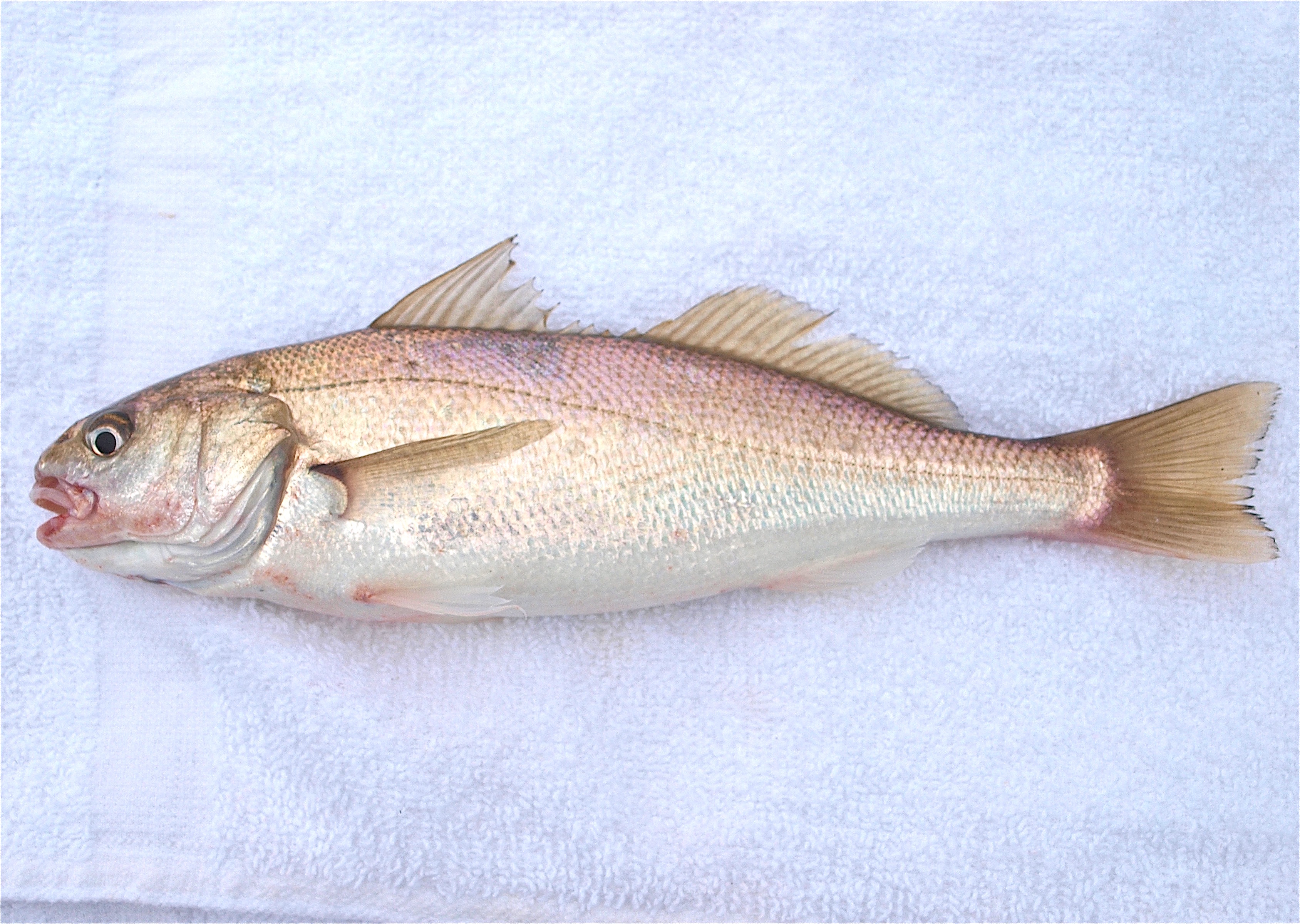
White Croaker aka Kingfish
A newer study conducted by the California Department of Fish and Game from 2004-2009 showed much the same results. White croaker were again the most numerous followed by jacksmelt, northern anchovy, Pacific mackerel, and barred surfperch. Rounding out the list by numbers were Pacific sardine, walleye surfperch, pileperch, shiner perch, Pacific herring, staghorn sculpin, speckled sanddab, barred sandbass, thornback ray, grass rockfish, calico surfperch, topsmelt, jack mackerel, angel shark and big skate. Most interesting was the drop-off in the number of calico surfperch (5th in the 1958 survey) and the catch of two barred sandbass, fish rarely taken north of Point Conception.
My personal records, counting fish from 1989 to 2014, show white croaker again leading the list followed by (in numerical order) California lizardfish, jacksmelt, staghorn sculpin, barred surfperch, walleye surfperch, bocaccio, speckled sanddab, Pacific sardine, jack mackerel, thornback ray, shiner perch, Pacific mackerel, northern anchovy, leopard shark, brown rockfish, juv. vermilion rockfish, cabezon, juv. yellowtail rockfish, onespot fringehead, white perch, silver surfperch, kelp greenling and juv. blue rockfish. Of note were the lizardfish that only showed up 2013-2014 but when present were caught in large numbers.
One fish of note is the aggressive little onespot fringeheads. They’re usually only about six inches in length but they seem to have a Napoleonic complex and ready to fight anything no matter its size — even anglers. Of course I don’t imagine they’re too happy being hauled up into a new world on the end of a hook.
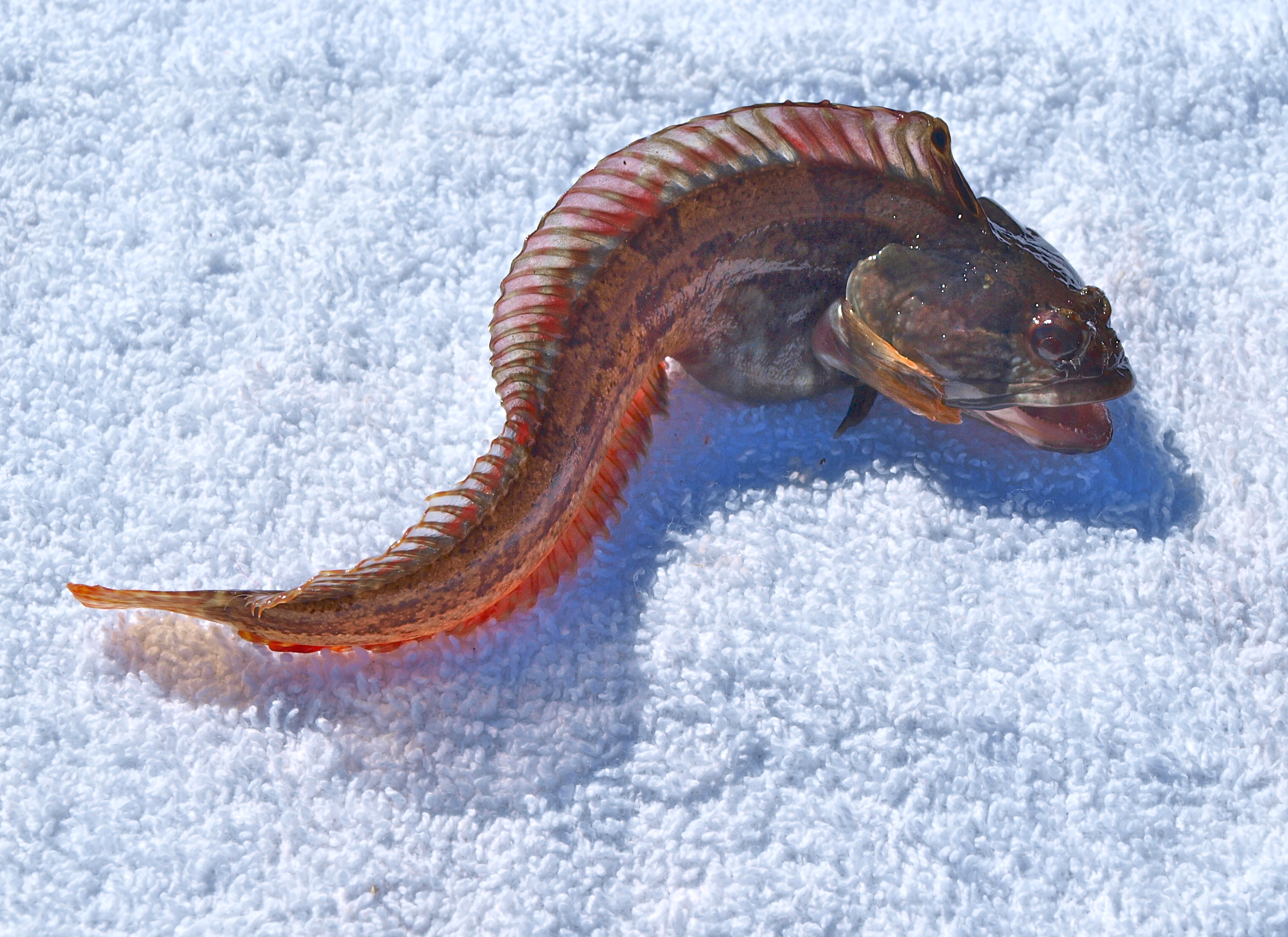
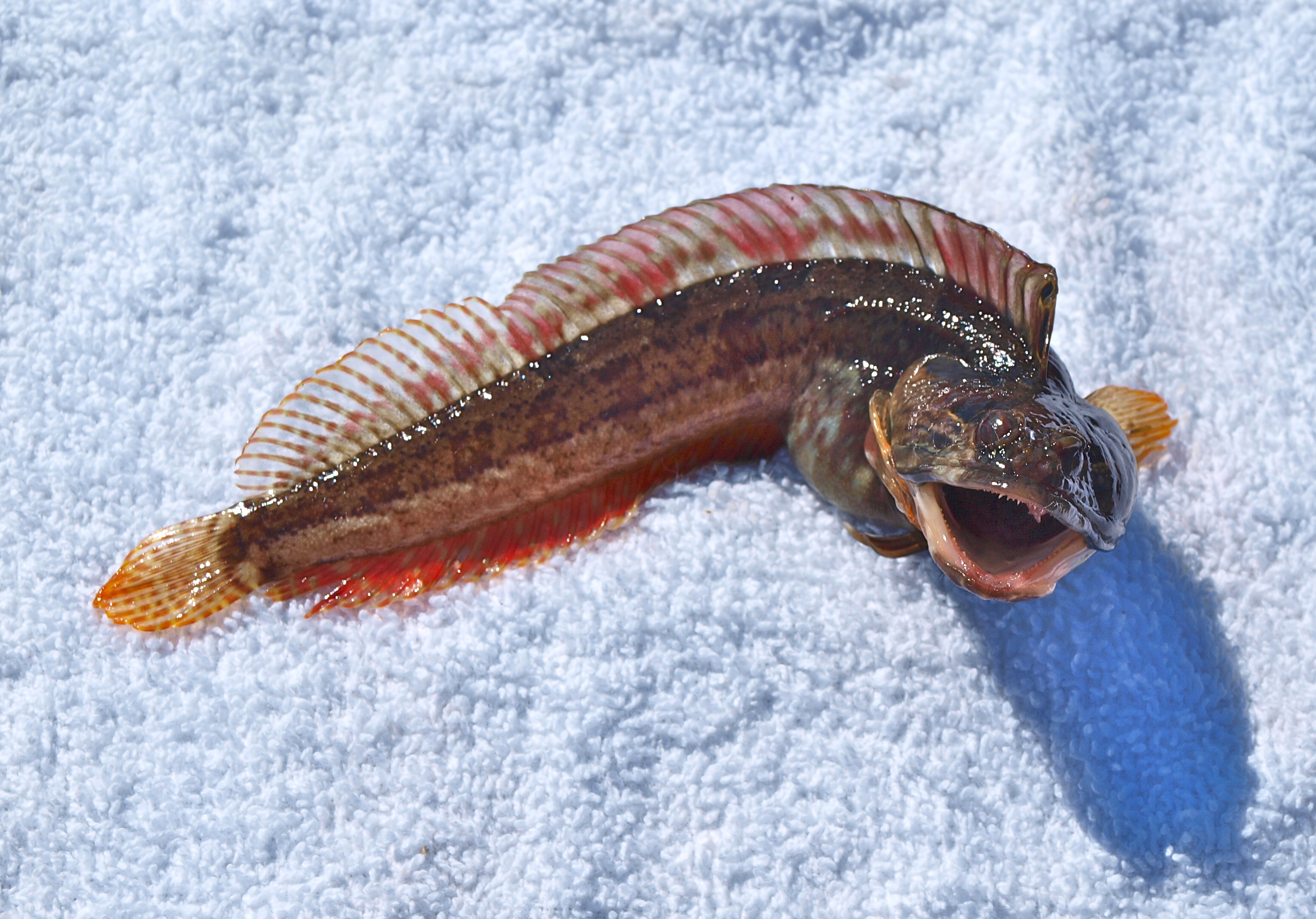
Onespot Fringehead
As a rule, fishing is fairly slow or very good. It all depends on if the schooling species have decided to visit the area. When present, anglers can expect excellent fishing. Most years will see good fishing for species such as sardines, jack mackerel (Spanish mackerel), jacksmelt and possibly Pacific mackerel (blue mackerel) but it’s mainly a late spring to fall proposition. And though it seems at times the hotter the weather the better the fishing, that isn’t always true. I spent a couple of hours one uncomfortable afternoon on the adjacent San Luis Pier in 100-degree weather. I was wilting faster than a pear but if the fish had been biting I might have stayed. As it was, I only managed a couple of fish before heading over to the cooler climes of Morro Bay (where I found a nice cool, crisp fog covering the town). But to be fair the warmer weather usually means more fish and more fishermen.
Wintertime sees fewer fish and fewer fishermen. Late winter to spring is the best time for surfperch while a few flounder and sole may also show during the winter months. This is the time for locals to get their perch—barred and calico—and though the numbers may be less than the pelagics, the quality can be good.
A fish occasionally seen in the shallow to mid-pier areas during the late fall to winter months is steelhead trout. Most often the fish are fairly small and most often they are mistakenly hooked on Sabiki-type rigs. Release them and do so with care! An effort is underway to reestablish the steelhead in San Luis Obispo Creek so “pier rats” can do their good deed for the day by helping them survive.
The waters at the end of the pier, which are fairly deep, mainly offer up small rockfish (in the summertime), kingfish (white croaker), jacksmelt, pelagics and, once in a blue moon, a salmon.
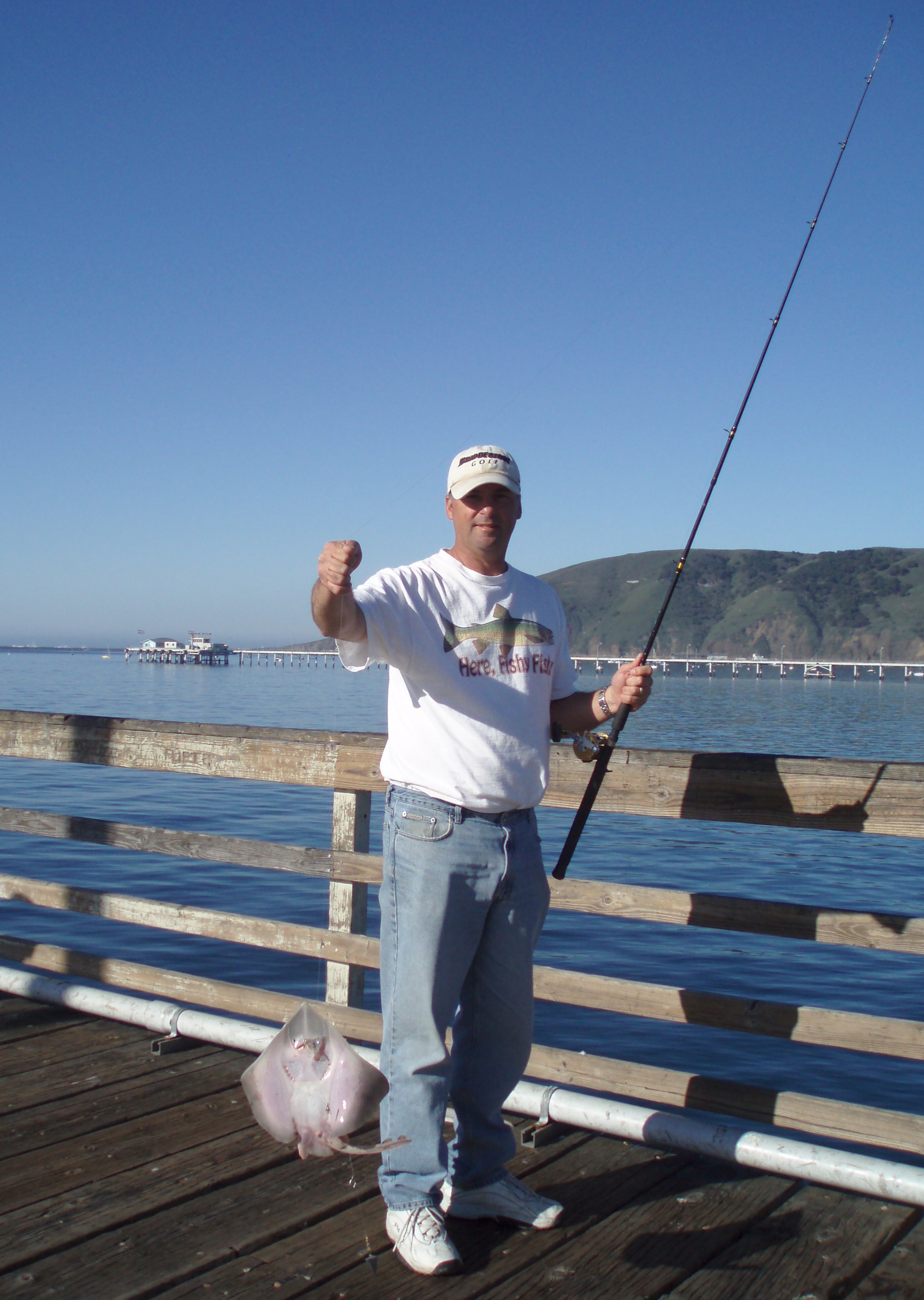
Skate
The end waters do offer up some decent shark fishing at night with primarily a mix of dogfish, leopard sharks, and a few puffer sharks (swell sharks). Bat rays and big skates are also common so have strong gear to bring them up to the pier.
Some years may also see a few soupfins landed as well as thresher sharks, especially when the sardines and mackerel are around, but Pismo seems better for the threshers.
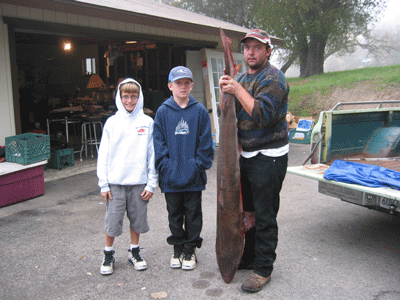
A Soupfin Shark caught by PFIC member Eddie
White sharks are also present as evidenced by the “shark warning” signs along the beach. As the population of sea lions has arisen, so have the visits from “whitey.” A lady who wanted to swim with the sea lions was killed in 2003 (see the story below) and there have been several additional shark sightings since then. It doesn’t mean you should break out the heavy tackle and pursue the “man eaters” (they’re protected) but you should be aware that they might be around. There haven’t been any reports of the big fish endangering “pier rats” but I would be a little weary if I was one of those surfers down by the beach.
Fishing Tips. Although the pier is fairly long, I have always had the best results fishing the inshore area of the pier, the first third of the pier. Just outside the breaker area of the surf will often yield the larger barred and calico surfperch and this is the only pier where the recorded catch of calicos was higher than the barred. Some warm-water years will also see schools of queenfish flock into these shallow waters. Springtime months can also, at times, see schools of small leopard sharks.
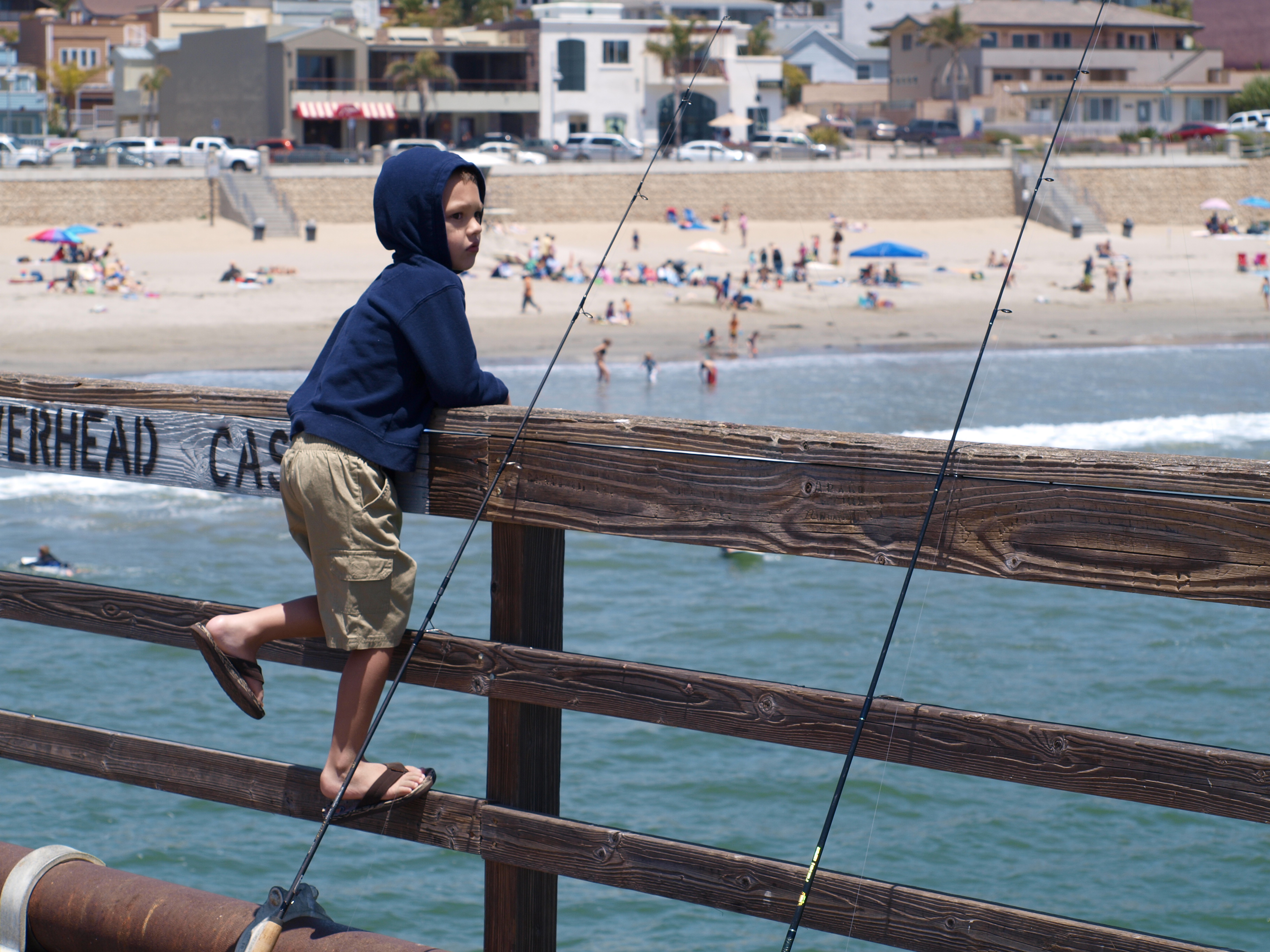
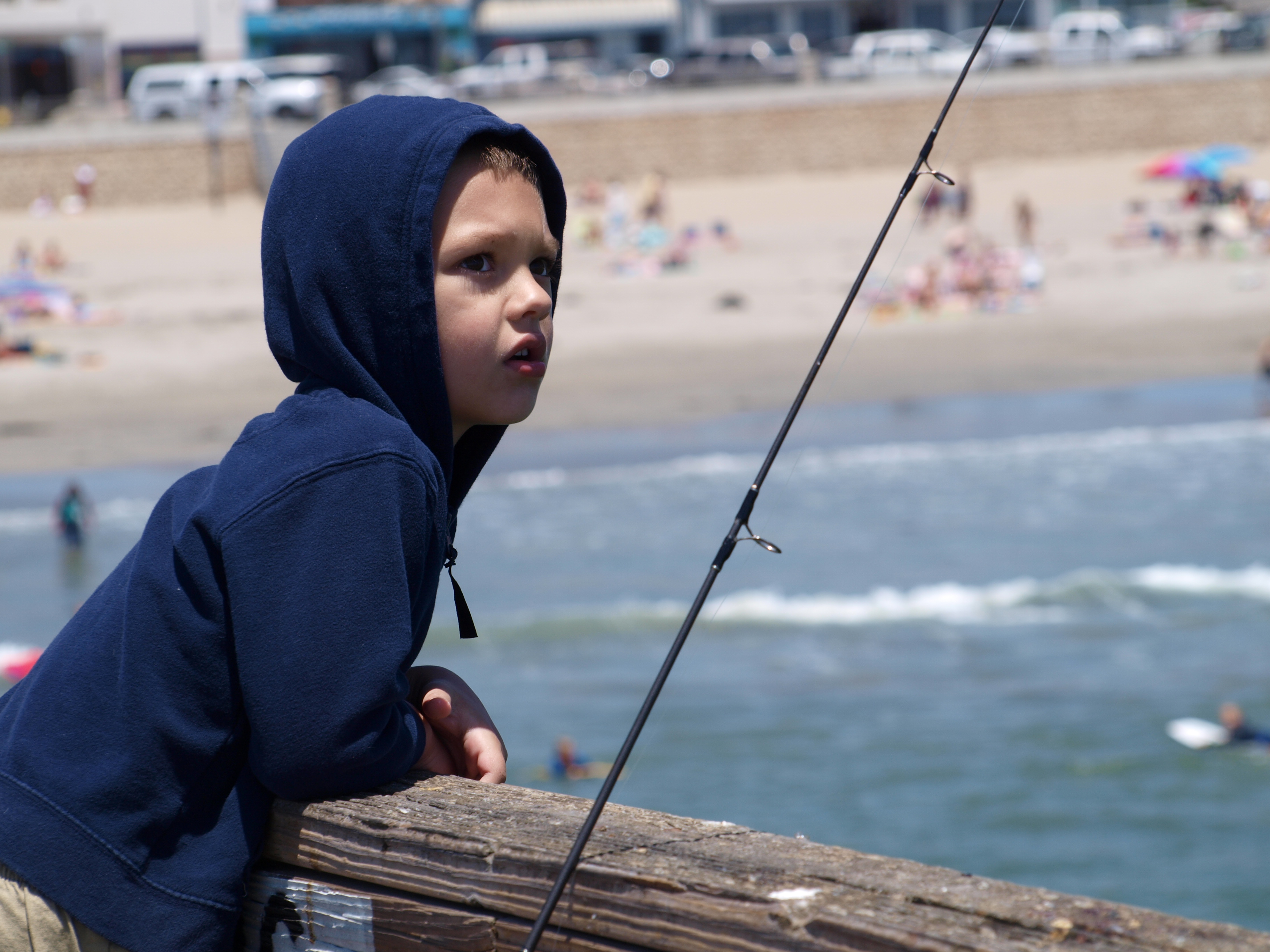
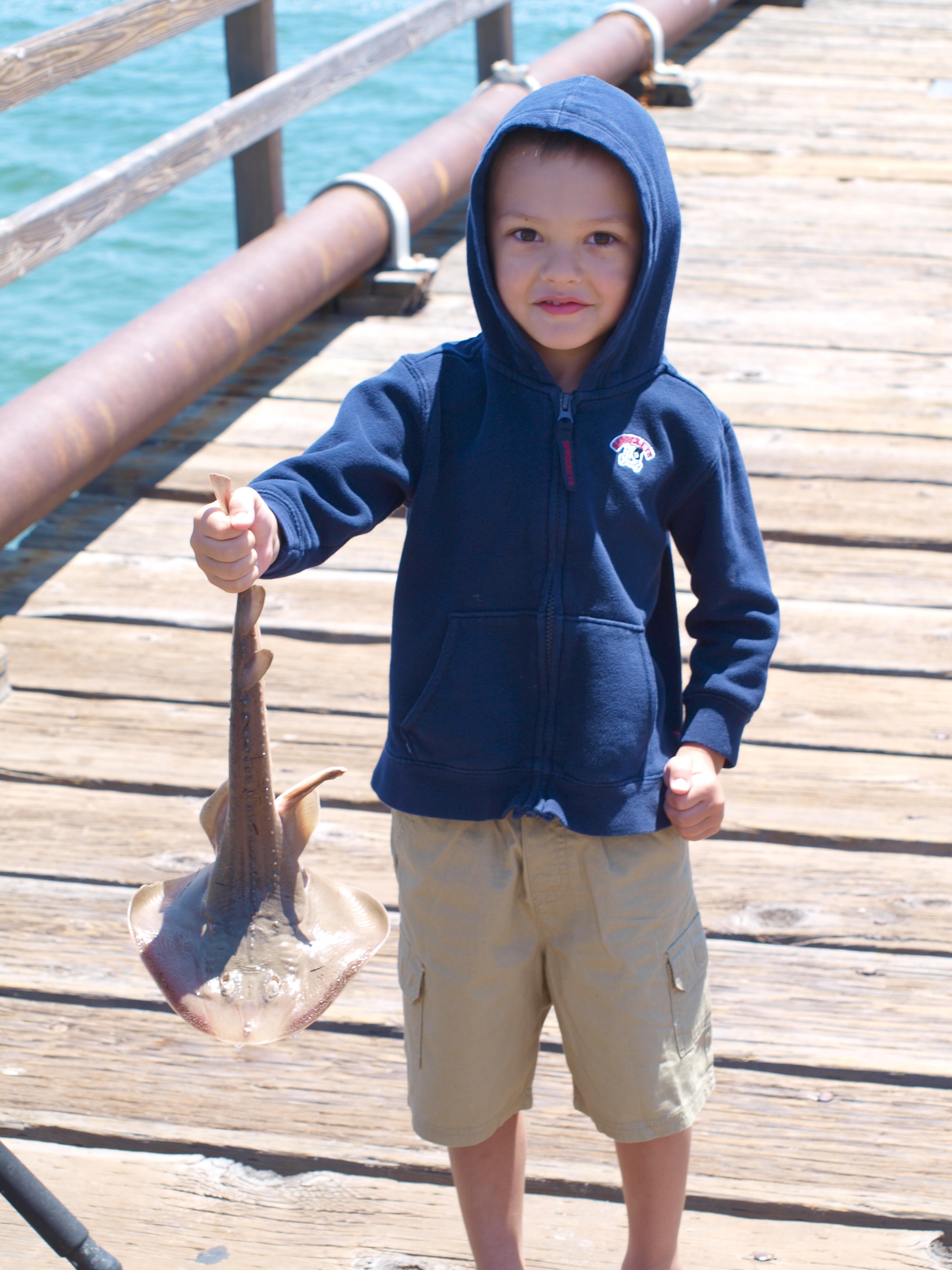
My grandson Adam watching his rod and catching a thornback ray
A little farther out on the pier, mid-pier, yields large numbers of white croaker (often on every cast). Unfortunately, small speckled sanddab and staghorn sculpin (bullheads) will often fight to get on to your hook first. During the summer to fall months, this is also a very good area to fish at night for thornback rays and the fewer, but larger, skates and bat rays. Down around the pilings will yield walleye surfperch, silver surfperch and an occasional white or black seaperch. Some years will also see the bottom covered with California lizardfish and when they are thick they can be hard to keep off your line.
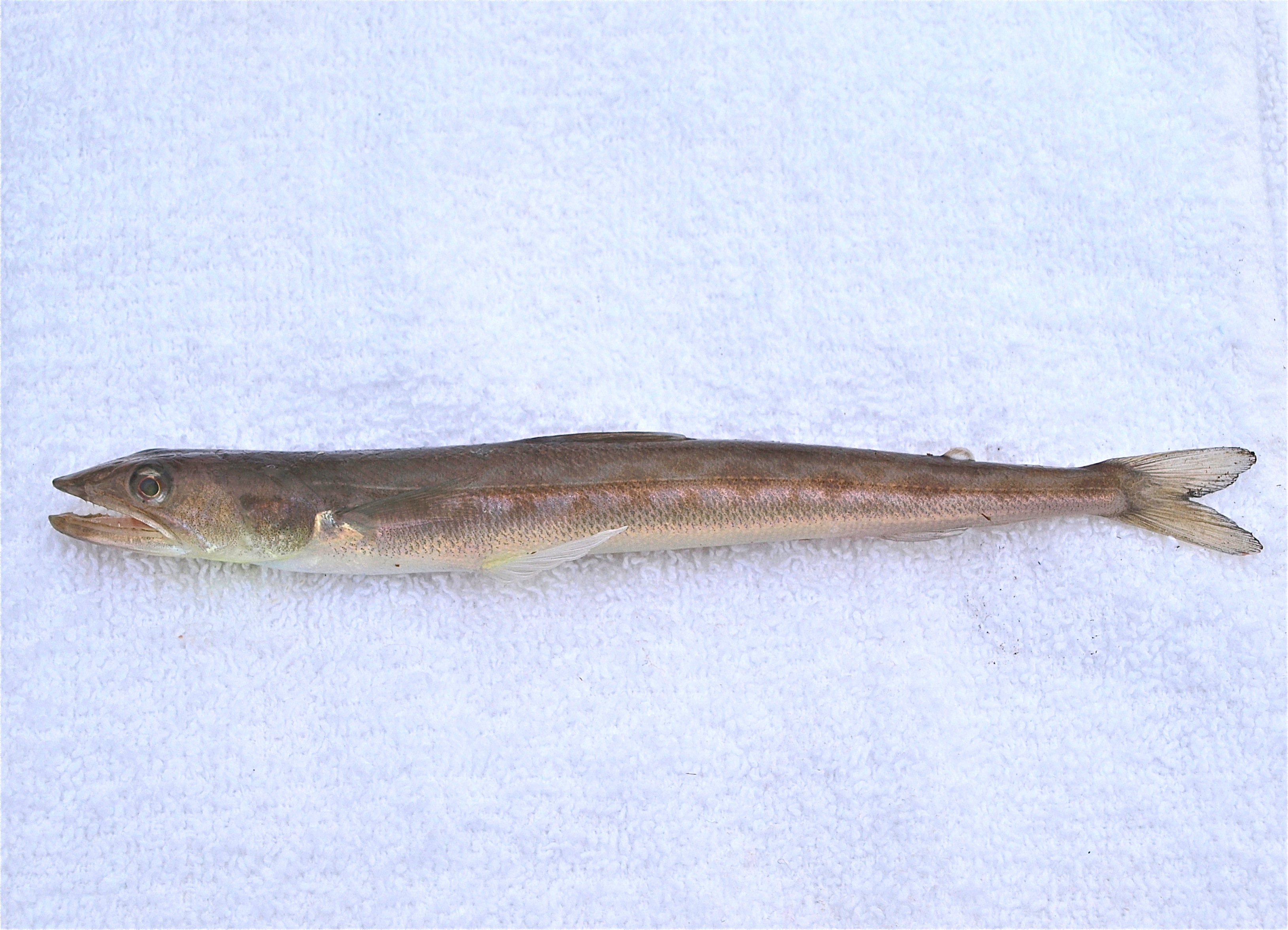
California Lizardfish
Fishing mid-way to the far end of the pier will yield white croaker and several varieties of flatfish on the bottom — Pacific and speckled sanddab, sand sole and starry flounder. From the mid-level to the top of the water, and usually caught with bait rigs such as Lucky Luras, will be jacksmelt or jack mackerel. Increasingly though, huge schools of sardines are returning to these waters and early evening hours can see anglers filling buckets with the small fish. Once again perch can be found down around the pilings and a few pileperch and striped seaperch will be added to the other species. Also joining in the fun, but less common, are cabezon and a few lingcod which seem to be strange species for the sandy-bottom environment found at this pier.
Bloodworms, pile worms, sand crabs, ghost shrimp and fresh mussels work best for the larger perch. Worms are best for the jacksmelt, and anchovies (remember, only a small piece) are best for the white croaker. Squid is best for rays and sharks.
For more than 50 years an annual summertime ritual was to head to the Central Coast piers and catch bucket loads of snapper — small, immature bocaccio (rockfish). Their numbers are down but some summers will still see the small fish in abundance. If schools of bocaccio do show up around the pier remember to check the regulations on size and number (they seem to keep changing). Best though is to simply not keep any bocaccio, their numbers are just too low.
Some years will also see Pacific mackerel and when they’re in you can expect to catch a “mess of macs.” The standard rigging used by most is a bait rig, with or without bait. During the sunny part of the day many people simply cast out their unbaited rigs and jig for the mackerel. During the night, or when the fish are demanding to be fed, hooks are usually sweetened by the addition of a small strip of squid or a piece of brethren mackerel. The baited rig is then fished under a balloon or Styrofoam float, whatever will keep the bait just under the surface of the water. Better in my book is simply to use a high/low rig with a torpedo sinker (or shiny spoon) on the bottom of the line. Use size 6-2 hooks (size depending on the mackerel being encountered) and put a small piece of bloody mackerel on each hook. You’ll still catch plenty of fish and meanwhile save some money. Multi-mackerel on a bait rig have a way of twisting the line into an unsalvageable Gordian knot.
Some warm-water years may also see bonito and even barracuda, usually in late August or September. Best for the boneheads is feathers trailed behind a Cast-a-Bubble, jigs, or spoons. Best for the snakes are Krocodile or Kastmaster-type spoons.
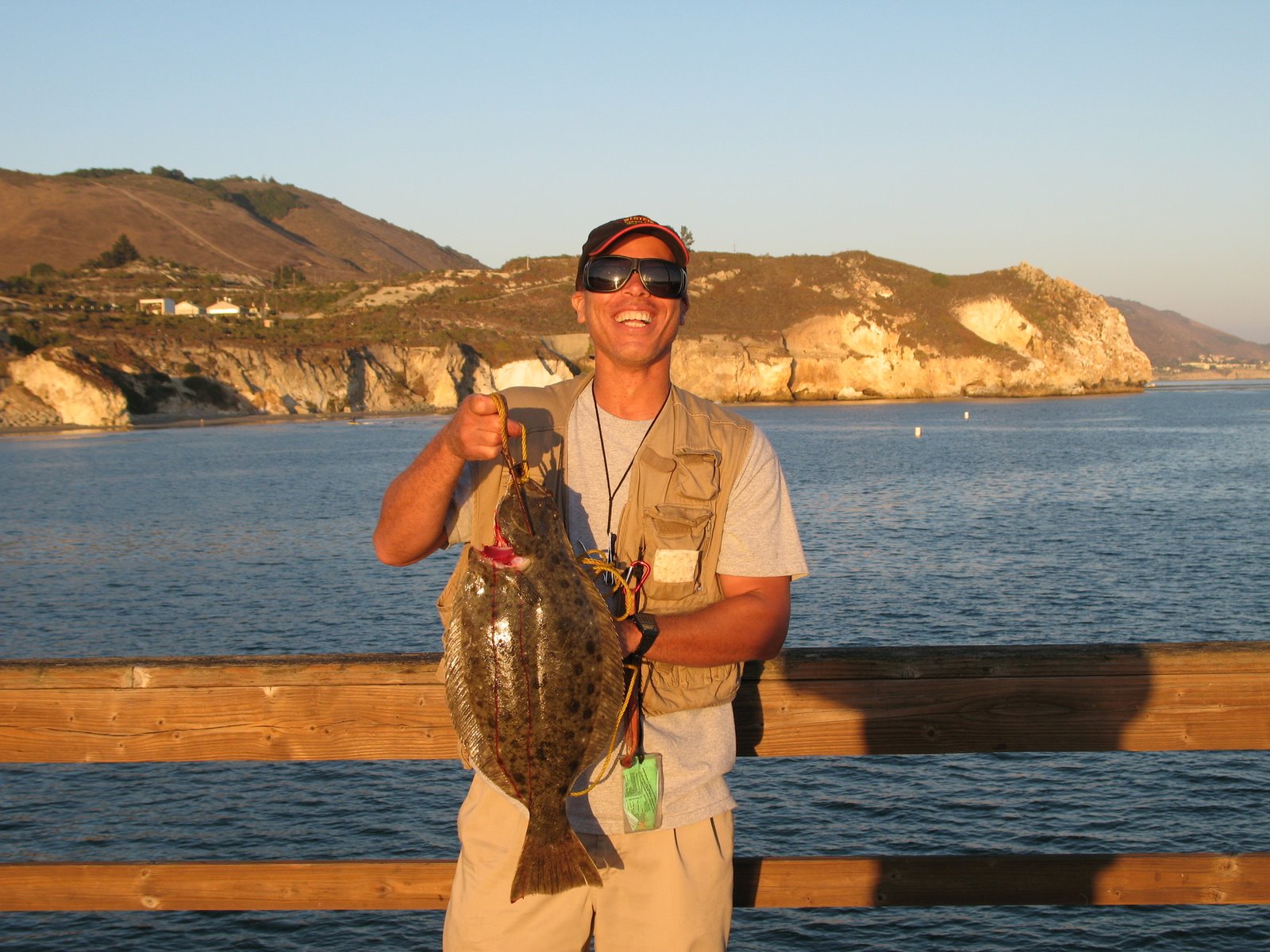
Red Fish (Robert) and a California halibut — August 2008 PFIC Get Together
The mid pier area is also where you will find halibut and they are most common from about May until September. Best results are usually obtained by anglers using live bait. Some of the locals will head over to the nearby Port San Luis Pier, purchase a bucket of live anchovies, and bring them back to fish for halibut. If the anchovies aren’t available use a drop net or Sabiki to get shinerperch, small walleyes, small kingfish, small smelt, small mackerel, or small sea lions (just seeing if you’re still awake); all but the latter make excellent halibut bait. Some anglers prefer lures but most of the halibut I’ve seen taken here were caught on live bait.
Another fish you might encounter mid-pier to the end is salmon. A few will be landed each year, usually on a whole anchovy fished under a float, but numbers are rarely sufficient to justify a separate trip to the pier just for them. A duo of steelhead trout were landed in August of 2011 which of course startled ALL the local anglers.
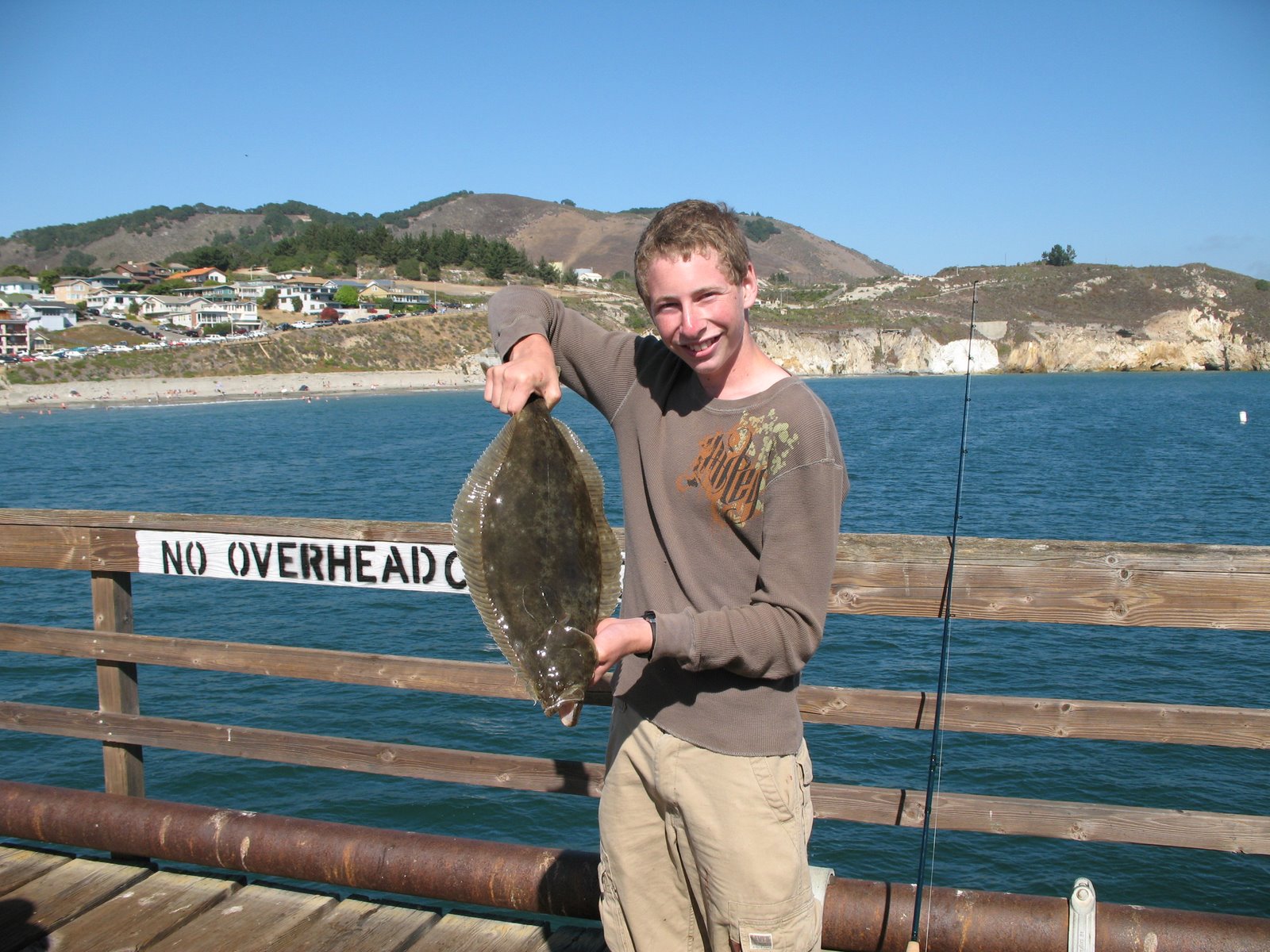
California Halibut caught by Matthew— August 2008 PFIC Get Together
Night fishing for sharks and rays is a tradition here. Most of the sharays caught will be leopard sharks, swell sharks, dogfish or bat rays, but every year will also see a few soupfins and threshers, possibly an angel shark or two, and even an occasional blue shark. Best baits for the sharks seem to be fresh mackerel but freshly caught croakers and perch will also work. Bat rays and skates prefer a big chunk of squid. The threshers prefer a live mackerel on a sliding leader but you can also float out a big, bloody piece of the same to attract them.
One unpleasant scene I’ve witnessed a couple of times at the pier was the bodies of puffer (swell) sharks littering the surface of the pier at the end. Many locals seem to believe the “old wives” tale that returning a swell shark to the sea after capture hurts the fishing. It’s not true and the “puffers” should be returned to the water since they are not good to eat.
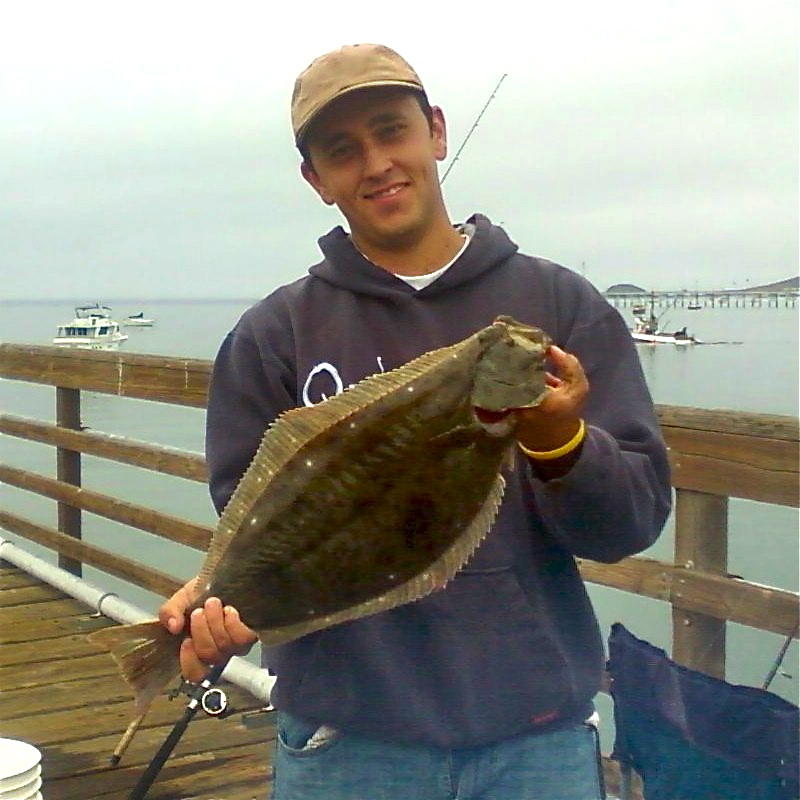
What appears to be a Pacific Halibut caught by “Polishfromthedeep” — August 2008 PFIC Get Together
One of the things we learned during a series of Kids Fishing Derbies that UPSAC put on from 2011-2014 was the number of small, juvenile fish out at the end of the pier during the summer months. The small fish, often only a few inches long, shelter under the pier much of the summer and are food for the larger fish as well as fish for young anglers.
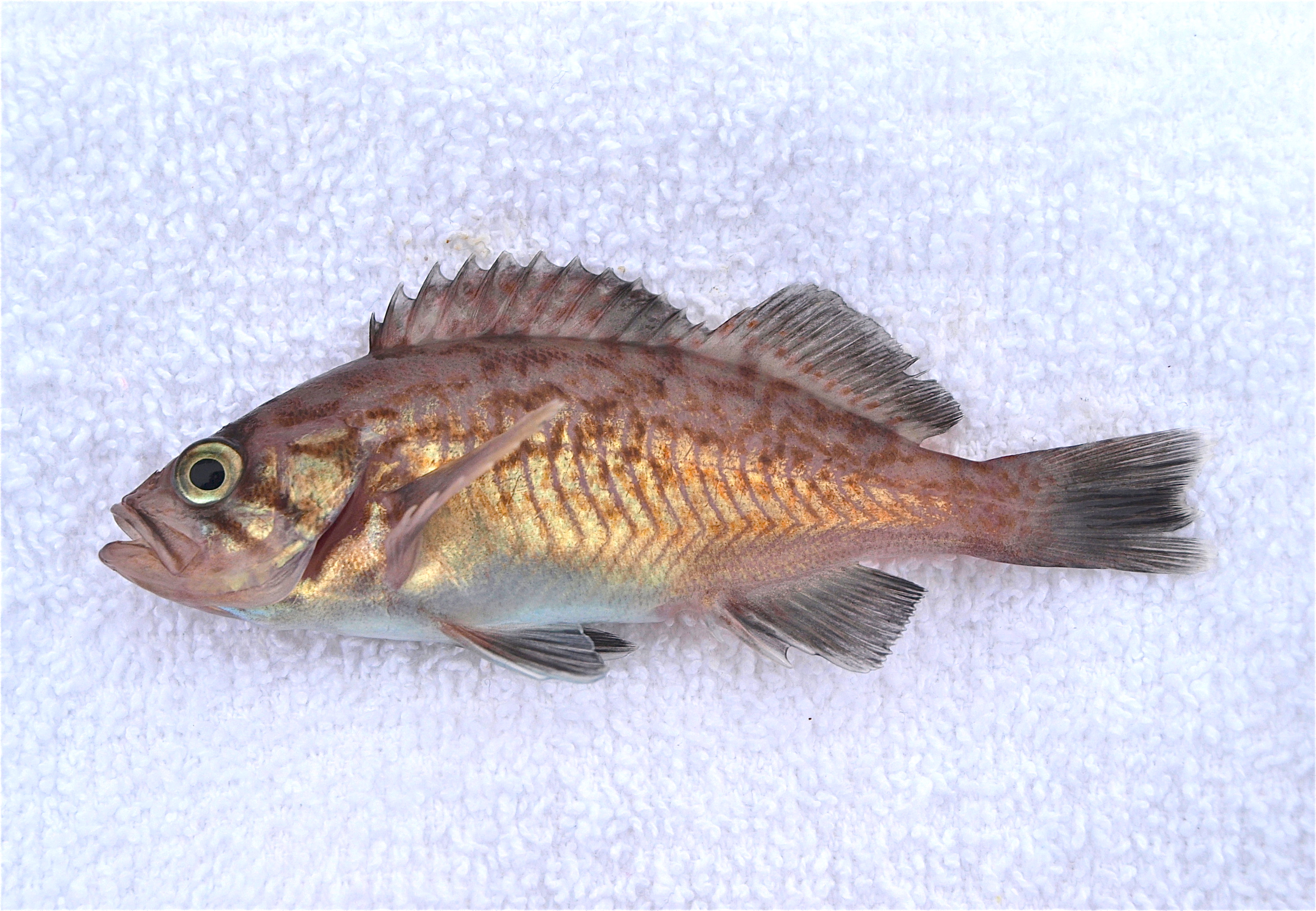
Juvenile Blue Rockfish
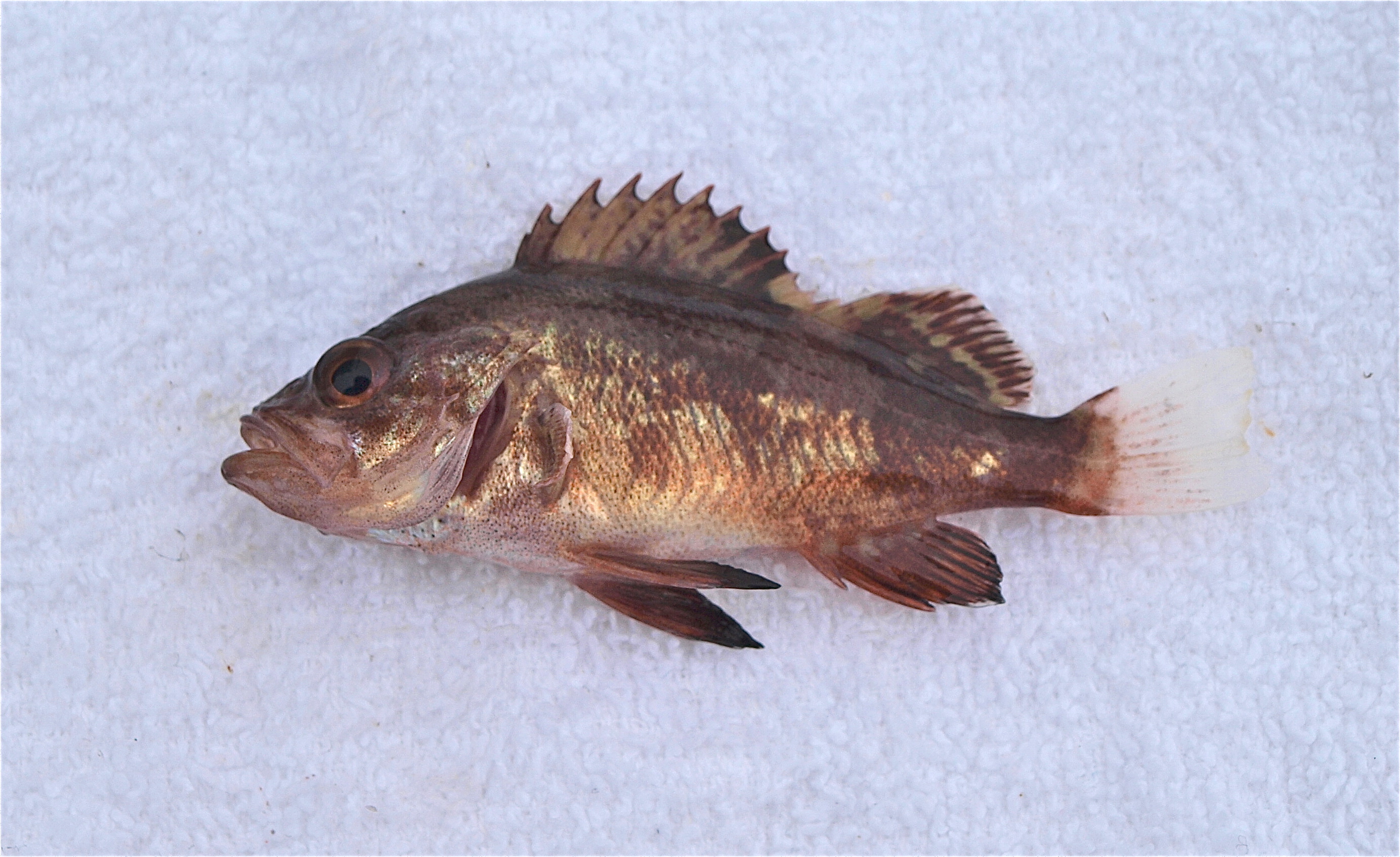
Juvenile Vermilion Rockfish
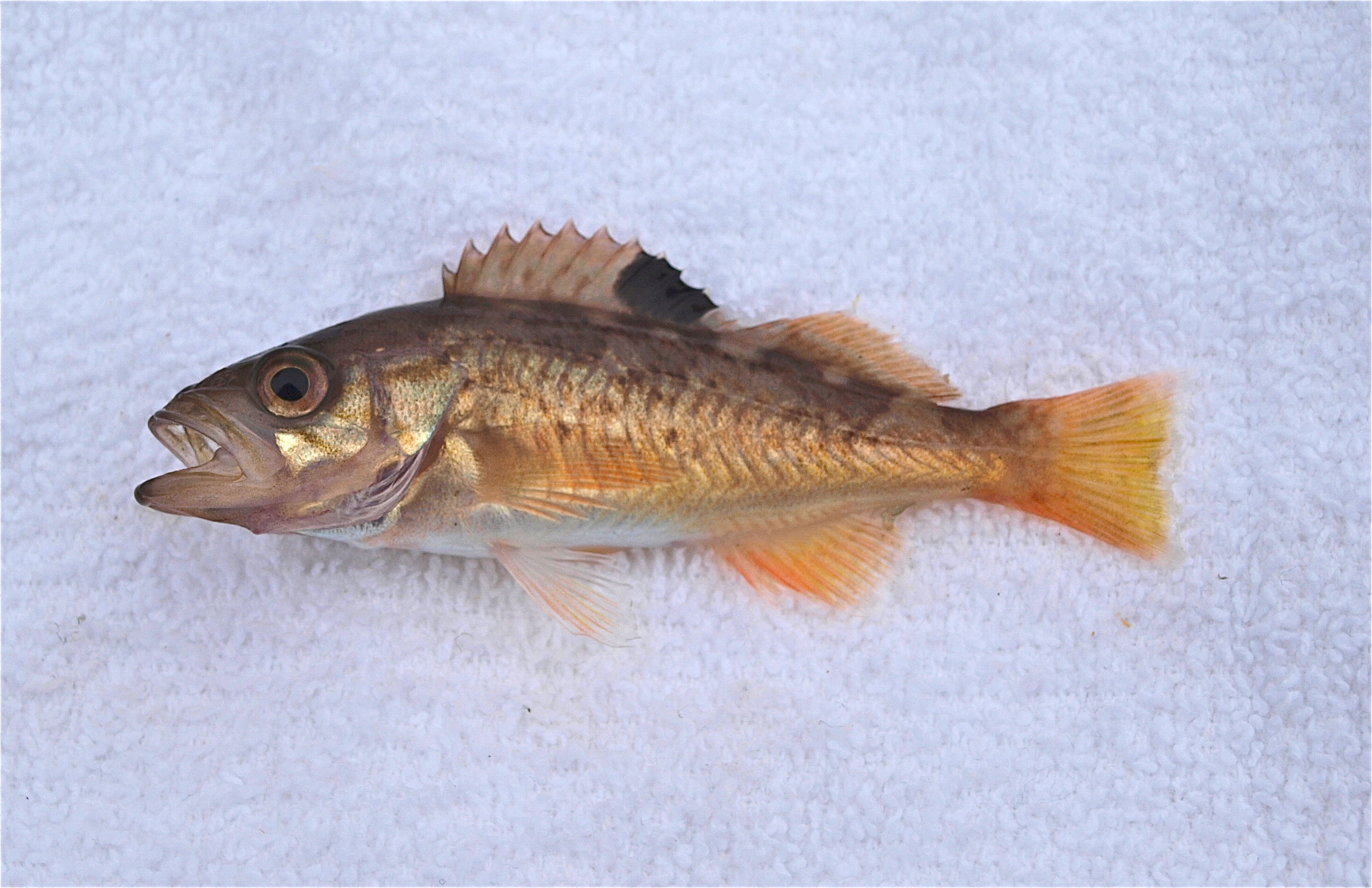
Juvenile Yellowtail Rockfish
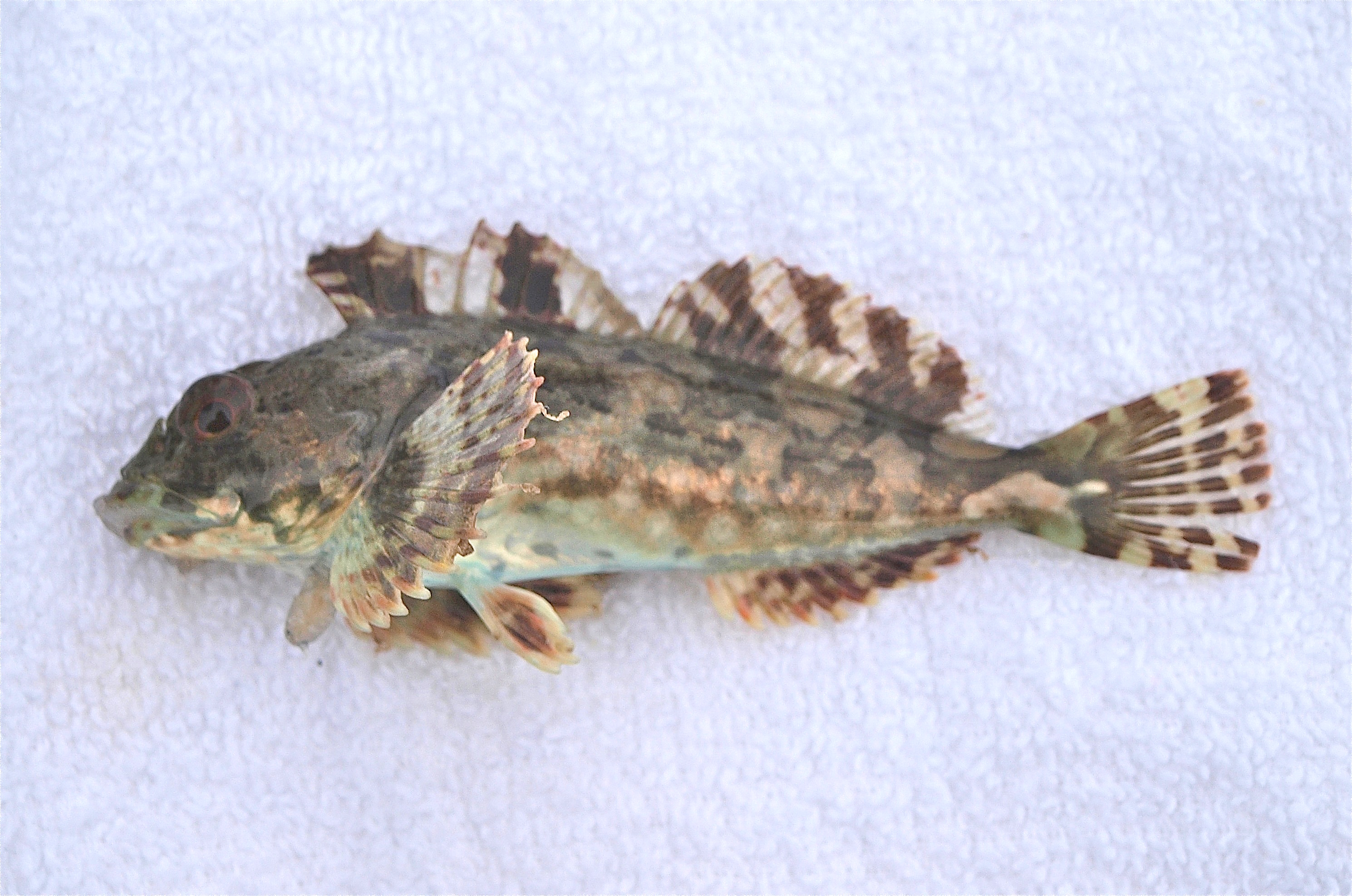
Juvenile Cabezon
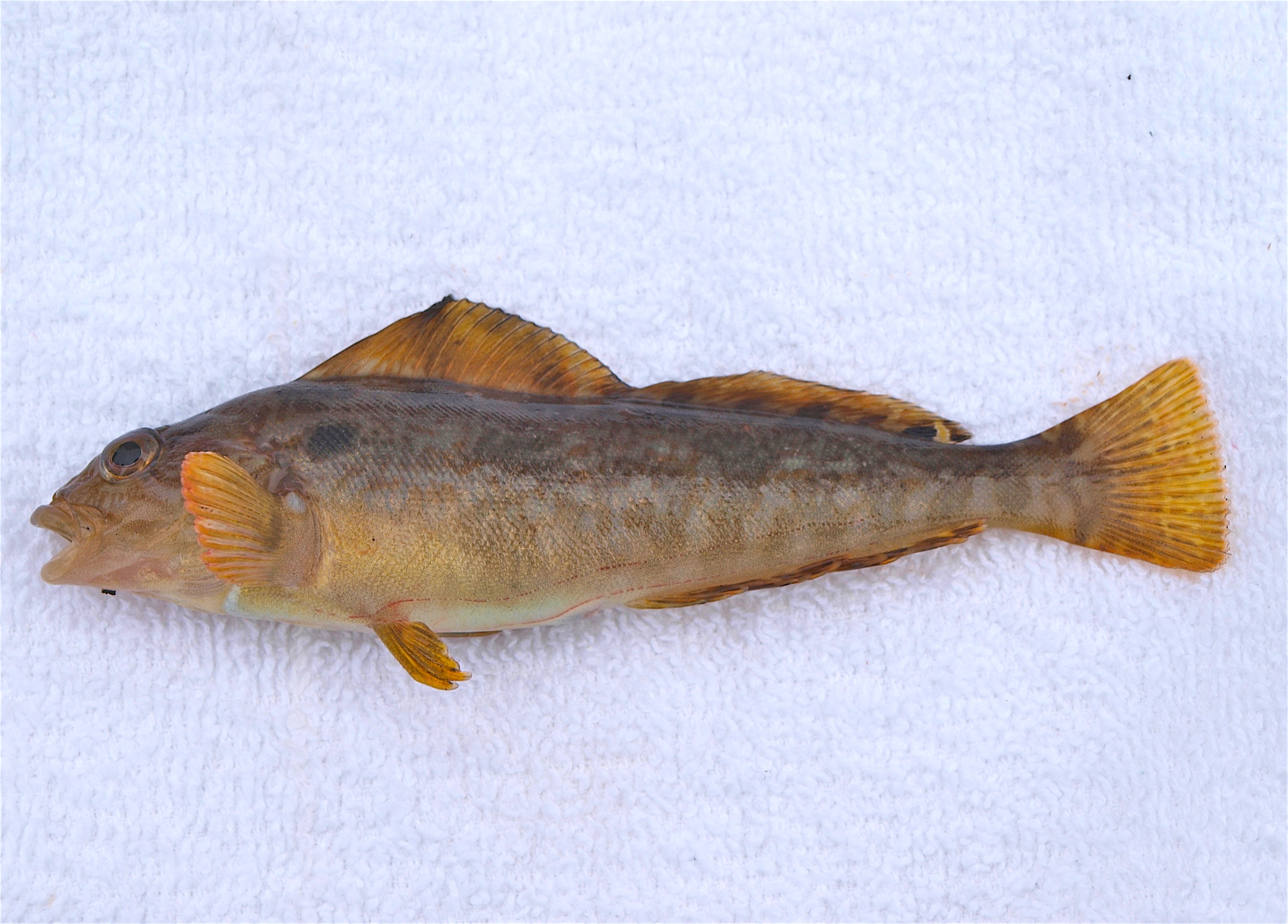
Young Kelp Greenling
Crustaceans and other creatures. The pier has never been noted as a great pier for crabbing but it does yield up a fair amount of rock crabs for those who give it a try. Nighttime is often best and best action is out at the end.
An occasional catch, one that is also seen at night, is small squid. If and when you do catch one remember that a live squid makes good bait for several species.
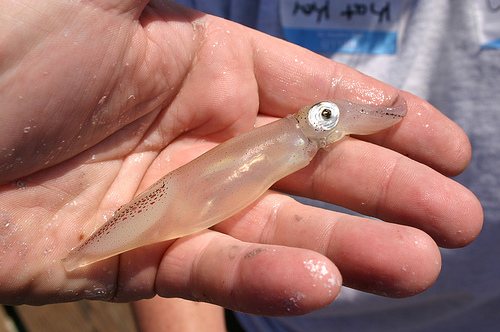
Squid
Potpourri — Perhaps more than you want to know about the Avila Pier
<*}}}}}}}}}>< — My most unusual catch at this pier occurred one chilly June night in 1997 when I caught a whelk, a sea snail that decided to nibble on the pile worm I was using for bait. Unfortunately, I hadn’t purchased any garlic or wine while passing south through Gilroy. I’ve never had escargot out at the end of a pier (actually I’ve never had escargot at all although my daughter has weird tastes and likes the slimy, slinky creatures). Whelks seem to be fairly thick on the bottom here as are starfish (oops, sea stars)! I wonder what a whelk and sea star sandwich would taste like? Perhaps you could have different sizes—a papa, momma, and baby star whelkich?
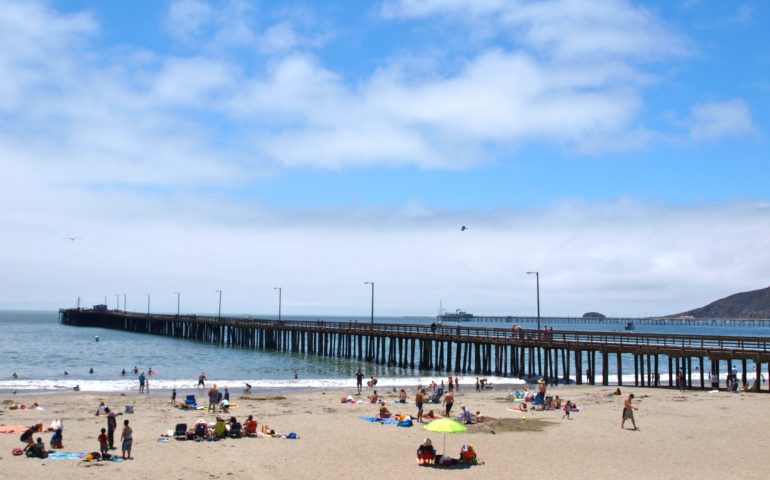
It’s halfway reopened now: https://ksby.com/news/2019/04/26/large-portion-of-avila-pier-reopens
Can you fish off the jetti coming off of whalers Island.